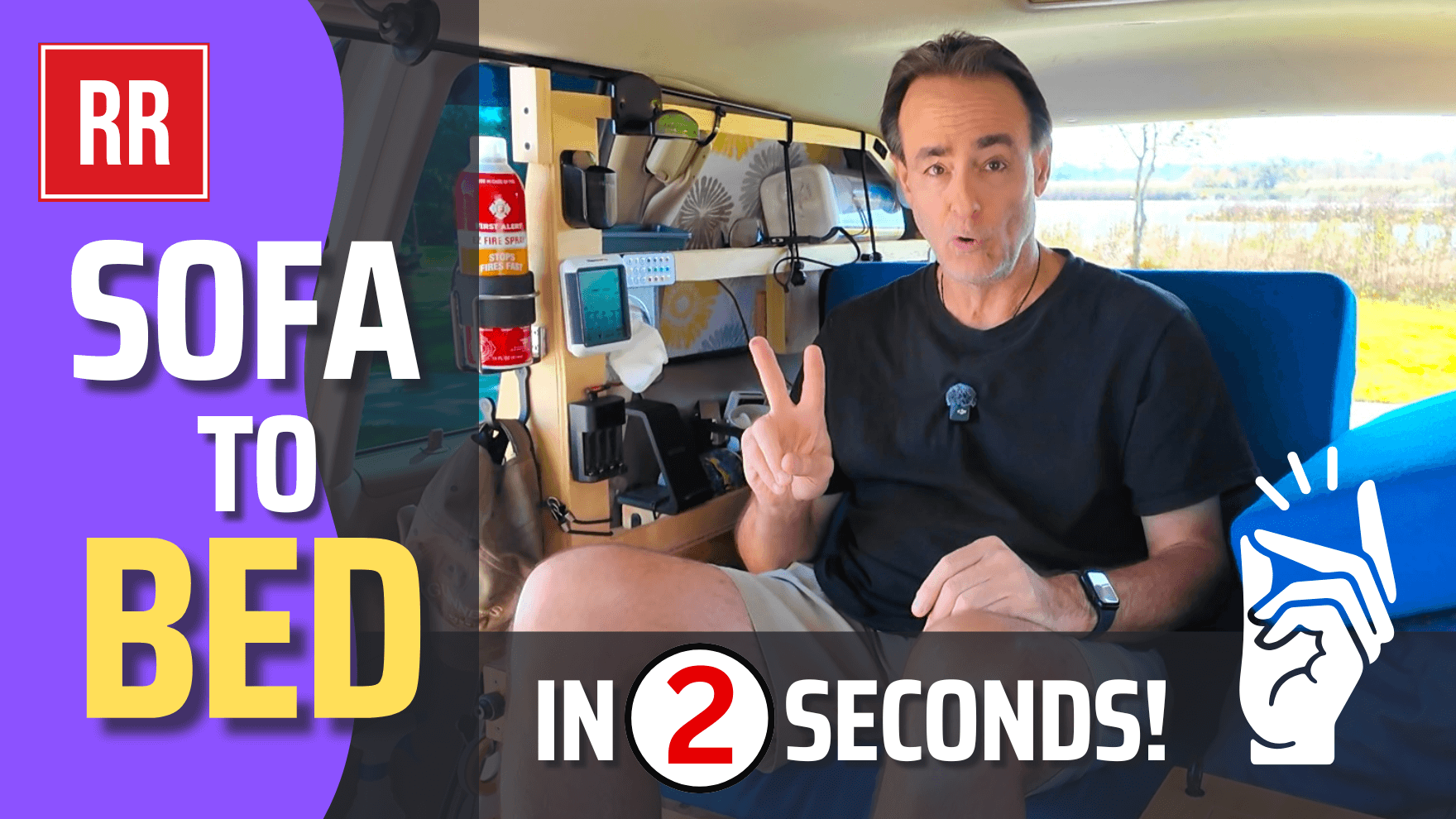Quick FOLDING SOFA BED Revolutionizes DIY VanLife ~ Bench to Bed in 2 Seconds!


Today, I want to share a project I’m particularly proud of: a comfy, DIY sofa bed that’s practical, durable and perfect for van life or small spaces. What’s more, it uses locking drawer slides to transition seamlessly from a bench to a bed in just two seconds. This design offers more legroom than some common designs and has a couple of unique comfort hacks that I can’t wait to share. Let’s dive in!
Links to materials, products and gear featured in this video
Why I Overbuild (and How You Can Keep It Simple)
If you’ve watched my other videos, you know I have a tendency to overbuild. This sofa bed is no exception. That said, I’ll show you how to simplify the process if you want something lighter and more affordable.
First, you don’t need a super-thick cushion. I originally used a 6-inch mattress cut from one I already had because I thought I needed the extra support (I was 50 pounds heavier back then). However, a 5-inch or even 4-inch foam mattress would work just as well and it’s lighter and cheaper. That 6-inch memory foam mattress I had was a tri-fold and I needed four cushions, so I cut a portion off of each of the three sections which resulted in me piecing together scraps for the last cushion. Save yourself the hassle and get a one-piece foam mattress instead. Trust me, it’s worth it.
For the cushion covers, I splurged on a beautiful deep blue Sunbrella fabric. While it’s expensive, it’s water- and UV-resistant—perfect for outdoor use or van life. I hired a professional upholsterer to cover them, but if you can sew you’ll save a lot of money.
The Key to a Functional Sofa Bed: Drawer Slides
The star of this build is the 28-inch heavy-duty locking drawer slides. These slides allow the sofa to transform into a bed effortlessly while keeping the structure secure. One tip: make sure at least one of the slides has a locking mechanism to prevent the sofa from collapsing to bed mode accidentally. These slides can be pricey (mine cost $110), but they’re essential for smooth operation.
Frame and Platform Design: Tips and Tricks
The frame is simple yet sturdy, made from 2x3 wood studs. I used 3-inch deck screws to assemble the H-shaped base and added steel brackets for extra strength. The frame supports the sliding drawer box, which is also constructed from 2x3s. To ensure smooth sliding, mount the drawer slides slightly above the outer bed frame rails. If the slides are too low, the platform will rub and be difficult to move.
The platform itself is made from a single sheet of 5/8-inch thick birch plywood, ripped down to 29 3/8-inches wide. It’s heavy (33 pounds), but you could use thinner plywood to save weight. I connected four panels with stainless steel hinges; three panels are 18-inches deep and the front seat panel is 22 and a half inches deeper to provide extra leg support when sitting—an essential feature for tall people like me.
Comfort Hacks You’ll Love
- Seat Depth Matters: Make the seat panel deeper than the other panels. My first design had equal panel sizes, but my legs would start to hurt after sitting for 15 minutes. The deeper seat panel in this build adds much-needed support.
- Thin Back Cushion: For sitting up, a thinner cushion makes a huge difference. I created a separate 4-inch cushion for the seat back and reserve the thicker 6-inch cushions for sleeping. This setup is far more comfortable for lounging but does take up extra storage space.
Lessons Learned (The Hard Way)
I made a costly mistake by starting with a 38-inch-wide bed frame, only to realize later that I didn’t need it that wide. I wasted my time and extra money on the materials and I had to pay the upholsterer twice to resize the cushions—ouch! The takeaway? Plan your dimensions carefully before committing to expensive materials or custom work.
Costs and Weight Breakdown
This project wasn’t cheap, but here’s the rundown:
- Materials: $475, including wood, plywood, drawer slides and foam.
- Optional Add-Ons: $60 for a thinner seat back cushion, plus potential tool costs.
- Weight: The frame and platform weigh a combined 68 pounds, with the cushions adding another 10 pounds.
If you’re looking to save, consider using 1/2-inch plywood, lighter drawer slides and thinner cushions.
Final Thoughts
This DIY sofa bed has been a game changer for my van life setup. It’s sturdy, functional and surprisingly comfortable thanks to the customizations I’ve made. If you’re planning a similar project, I hope these tips and lessons help you along the way.
Until next time...